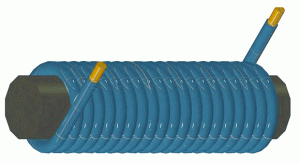
From stereo speakers and computer hard drives to heavy lifting devices and power generators, electromagnets are used in a variety of applications. They are called “electromagnets” because they rely on an electrical current to produce a magnetic field. This is in stark contrast to conventional magnets, also known as permanent magnets, that do not rely on an electrical charge to produce a magnetic field.
History of Electromagnets
While permanent magnets occur naturally in Earth’s crust, electromagnets are man-made. The device’s origins can be traced back to 1820 when a Danish scientist named Christian Orsted discovered that by producing an electrical current through a coiled wire, he could produce a magnetic field. Just a few years, William Sturgeon turned Orsted’s idea into a reality by building one of the world’s first electromagnets out of copper wire.
Electromagnets Can Be Turned On and Off
Because they use an electrical current to produce a magnetic field, electromagnets can be turned on and off. When the electrical current is active, the electromagnet produces a magnetic field. When it’s not active, the electromagnet doesn’t produce a magnetic field. Therefore, electromagnets be used to selectively create a magnetic field when magnetism is needed for a specific purpose. In heavy lifting devices, for example, an electromagnetic may be activated to lift a heavy load. After lifting the load and moving it to a different area, a worker may deactivate the electromagnet to release the load. This isn’t possible with permanent magnets, which constantly produce a magnetic field.
How Electromagnets Are Designed
Most electromagnets are designed with a coil of wire wrapped around a core consisting of a ferromagnetic material, such as iron. As electricity flows through the wire, it creates a concentrated magnetic field in the center of the coil. And using a ferromagnetic core further amplifies the strength of the device’s magnetic field.
Electromagnets vs Permanent Magnets
Both electromagnets and permanent magnets have their own advantages and disadvantages. The primary advantage of using an electromagnet over a permanent magnet is that you can control its magnetic field. You turn on and off the device’s magnetic field, and with many electromagnets, you can even control the power of the magnetic field.
When using an electromagnet, though, you’ll need a power supply to provide an electrical current. Some electromagnets are plugged into an electrical outlet, whereas others contain a battery bank. Permanent magnets, on the other hand, don’t require a power source since they are naturally ferromagnetic.
